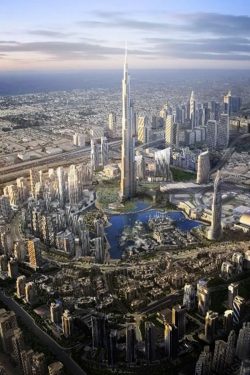Structural engineer William F. Baker, a partner in the Chicago office of SOM, and a specialist in supertalls, has designed several exceptionally slender skyscrapers of nearly 2000 feet or higher. Only Burj Dubai, though, has found financing and moved forward… or upward! In this lecture Bill Baker made clear the innovative form and structural system of Burj Dubai and explained how the tower was “virtually designed in the wind tunnel.”
William F. Baker
Bill Baker is the partner in charge of Structural and Civil Engineering for the Chicago office of Skidmore, Owings & Merrill LLP. His approach to structural engineering seeks to integrate form, function, and aesthetics. Since joining the firm in 1981, Mr. Baker has worked on a broad range of engineering projects including designing structural systems for supertall buildings, to smaller, specialized structures and engineering collaborations with artists.
Mr. Baker developed the structural system for the Burj Dubai, which is known as the world’s tallest building, topping out at 2,683.7 feet in January 2009. His recent completed projects include the long span structure of the Virginia Beach Convention Center and the glass cable-net entrance pavilion of the General Motors Renaissance Center in Detroit, Michigan.
In addition to his work at SOM, Mr. Baker frequently lectures on a variety of structural and civil engineering topics within the U.S. and abroad.
